
Mountaineering, mountain climbing, or alpinism is a set of outdoor activities that involves ascending mountains. Mountaineering-related activities include traditional outdoor climbing, skiing, and traversing via ferratas that have become sports in their own right. Indoor climbing, sport climbing, and bouldering are also considered variants of mountaineering by some, but are part of a wide group of mountain sports.

Annapurna is a mountain situated in the Annapurna mountain range of Gandaki Province, north-central Nepal. It is the 10th highest mountain in the world at 8,091 metres (26,545 ft) above sea level and is well known for the difficulty and danger involved in its ascent.

The eight-thousanders are the 14 mountains recognised by the International Mountaineering and Climbing Federation (UIAA) as being more than 8,000 metres (26,247 ft) in height above sea level, and sufficiently independent of neighbouring peaks. There is no precise definition of the criteria used to assess independence, and at times, the UIAA has considered whether the list should be expanded to 20 mountain peaks by including the major satellite peaks of eight-thousanders. All of the eight-thousanders are located in the Himalayan and Karakoram mountain ranges in Asia, and their summits lie in an altitude known as the death zone.

Dhaulagiri, located in Nepal, is the seventh highest mountain in the world at 8,167 metres (26,795 ft) above sea level, and the highest mountain within the borders of a single country. It was first climbed on 13 May 1960 by a Swiss-Austrian-Nepali expedition. Annapurna I is 34 km (21 mi) east of Dhaulagiri. The Kali Gandaki River flows between the two in the Kaligandaki Gorge, said to be the world's deepest. The town of Pokhara is south of the Annapurnas, an important regional center and the gateway for climbers and trekkers visiting both ranges as well as a tourist destination in its own right.
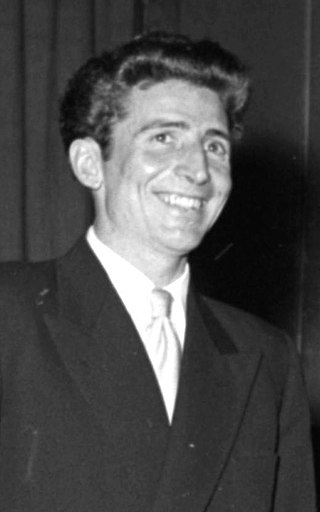
Hermann Buhl was an Austrian mountaineer. His accomplishments include the first ascents of Nanga Parbat in 1953 and Broad Peak in 1957.

Gaston Rébuffat was a French alpinist, mountain guide, and author. He is well known as a member of the first expedition to summit Annapurna 1 in 1950 and the first man to climb all six of the great north faces of the Alps. In 1984, he was made an officer in the French Legion of Honour for his service as a mountaineering instructor for the French military. At the age of 64, Gaston Rébuffat died of cancer in Paris, France. The rock-climbing technique, the "Gaston", was named after him. A photo of Rébuffat atop the Aiguille du Roc in the French Alps is on the Voyager Golden Records.

Alan Hinkes OBE is an English Himalayan high-altitude mountaineer from Northallerton in North Yorkshire. He is the first British mountaineer to claim all 14 Himalayan eight-thousanders, which he did on 30 May 2005.

Edmund Viesturs is an American high-altitude mountaineer, corporate speaker, and well known author in the mountain climbing community. He was the first American climber to ascend all 14 of the eight-thousander mountains, and the 5th person to do so without supplemental oxygen. Along with Apa Sherpa, he has summitted eight-thousanders on 21 occasions, including Mount Everest seven times.
Louis Lachenal, a French climber born in Annecy, Haute-Savoie, was one of the first two mountaineers to climb a summit of more than 8,000 meters. On 3 June 1950 on the 1950 French Annapurna expedition, along with Maurice Herzog, he reached the summit of Annapurna I in Nepal at a height of 8,091 m (26,545 ft). Previously he had made the second ascent of the North Face of the Eiger in 1947, with Lionel Terray. He died falling into a snow-covered crevasse while skiing the Vallee Blanche in Chamonix. The mountain Pointe Lachenal in the Mont Blanc massif was named after him.
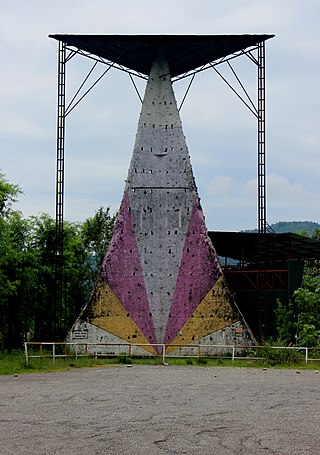
Maurice André Raymond Herzog was a French mountaineer and administrator who was born in Lyon, France. He led the 1950 French Annapurna expedition that first climbed a peak over 8000m, Annapurna, in 1950, and reached the summit with Louis Lachenal. Upon his return, he wrote a best-selling book about the expedition, Annapurna.

Lionel Terray was a French climber who made many first ascents, including on the 1955 French Makalu expedition in the Himalaya and Cerro Fitz Roy in the Patagonian Andes.
Nea Everilda Morin was a British rock climber and mountain climber.
Andrew James Lock OAM is an Australian mountaineer. He became the first, and still remains the only, Australian to climb all 14 "eight-thousanders" on 2 October 2009, and is the 18th person to ever complete this feat. He climbed 13 of the 14 without bottled oxygen, only using it on Mount Everest, which he has summited three times. He retired from eight-thousander climbing in 2012.
In the history of mountaineering, the world altitude record referred to the highest point on the Earth's surface which had been reached, regardless of whether that point was an actual summit. The world summit record referred to the highest mountain to have been successfully climbed. The terms are most commonly used in relation to the history of mountaineering in the Himalaya and Karakoram ranges, though modern evidence suggests that it was not until the 20th century that mountaineers in the Himalaya exceeded the heights which had been reached in the Andes. The altitude and summit records rose steadily during the early 20th century until 1953, when the ascent of Mount Everest made the concept obsolete.
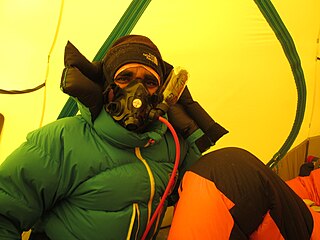
Expedition climbing, is a type of mountaineering that uses a series of well-stocked camps on the mountain that lead to the summit, and which are supplied by teams of mountain porters. In addition, expedition climbing can also employ multiple 'climbing teams' to work on the climbing route—not all of whom are expected to make the summit—and allows the use of supports such as fixed ropes, aluminum ladders, supplementary oxygen, and sherpa climbers. By its nature, expedition climbing often requires weeks to complete a given climbing route, and months of pre-planning given the greater scale of people and equipment that need to be coordinated for the climb.

Ang Tharkay was a Nepalese mountain climber and explorer who acted as sherpa and later sirdar for many Himalayan expeditions. He was "beyond question the outstanding sherpa of his era" and he introduced Tenzing Norgay to the world of mountaineering.
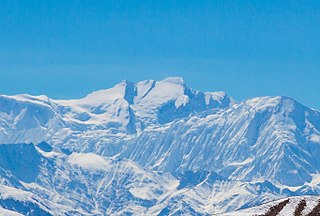
The American Women's Himalayan Expedition was a 1978 expedition to Annapurna which placed the first two women, and first Americans, on its summit. The expedition was led by Arlene Blum and consisted of thirteen women, and six sherpas. On October 15, the first summit team, composed of Vera Komarkova, Irene Beardsley, Mingma Tshering Sherpa and Chewang Ringjin Sherpa summitted Annapurna via the Dutch Route. The second summit team, Alison Chadwick-Onyszkiewicz and Vera Watson, died during the climb.
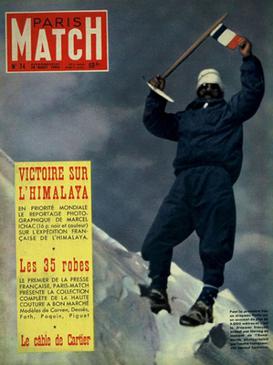
The 1950 French Annapurna expedition, led by Maurice Herzog, reached the summit of Annapurna I at 8,091 metres (26,545 ft), the highest peak in the Annapurna Massif. The mountain is in Nepal and the government had given permission for the expedition, the first time it had permitted mountaineering in over a century. After failing to climb Dhaulagiri I at 8,167 metres (26,795 ft), the higher peak nearby to the west, the team attempted Annapurna with Herzog and Louis Lachenal, reaching the summit on 3 June 1950. It was only with considerable help from their team that they were able to return alive, though with severe injuries following frostbite.

The 1970 British Annapurna South Face expedition was a Himalayan climb that was the first to take a deliberately difficult route up the face of an 8,000-metre mountain. On 27 May 1970 Don Whillans and Dougal Haston reached the summit of Annapurna I, which at 26,545 feet (8,091 m) is the highest peak in the Annapurna Massif in Nepal. Chris Bonington led the expedition, which approached up a glacier from the Annapurna Sanctuary and then used rock climbing techniques to put fixed ropes up the steep South Face. Although the plan had been to use supplementary oxygen, in the event it was not possible to carry any cylinders high enough for the lead climbers to use on their summit bid.















